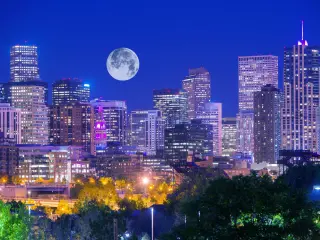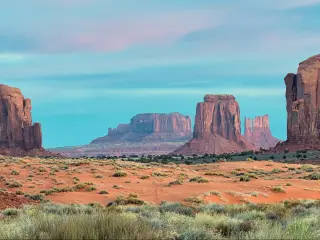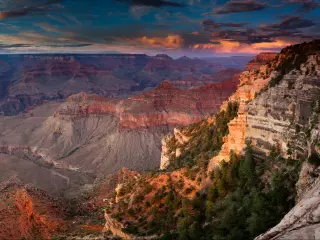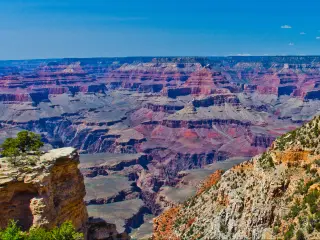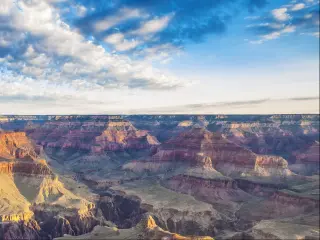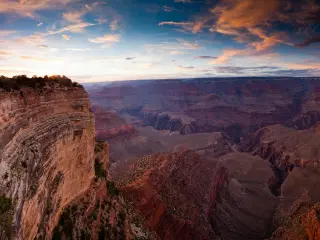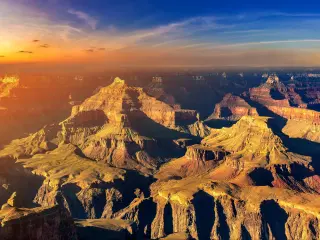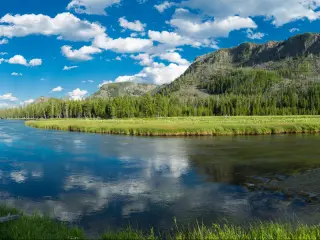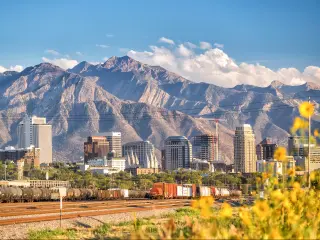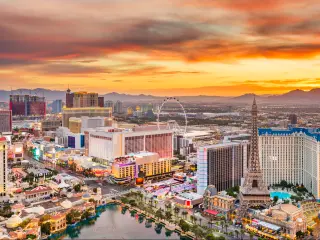Can You Drive The Grand Canyon?
As one of the world's natural wonders, the Grand Canyon definitely deserves a visit. A region of vibrant archaeological history, unique wildlife, and breathtaking vistas, if you're looking to drive someplace exciting and scenic, there's truly no better place than the Grand Canyon.
Though you can't actually drive through the Grand Canyon as each part of the structure has to be conserved, you can drive to and around the region, as well as to the entrances to the North and South Rims.
So, keep reading to learn how to drive to and around the iconic Grand Canyon as well as where to park, the best places to stay and the best time to travel.
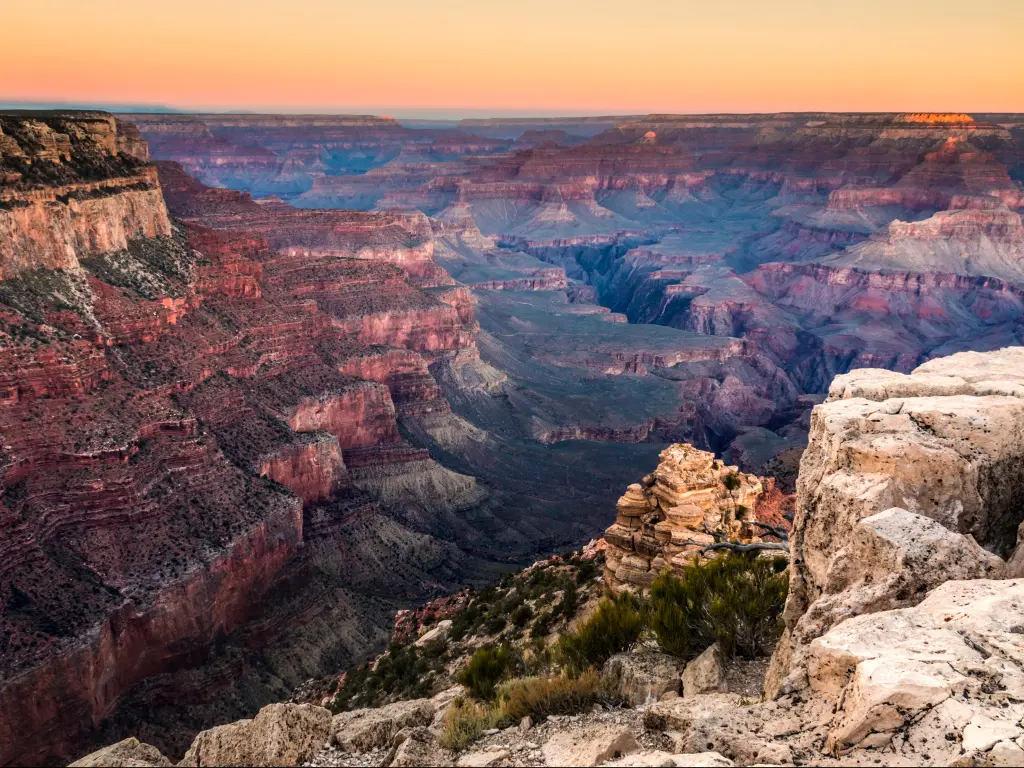
Best ways to drive to the Grand Canyon
Spread across over a million acres, the Grand Canyon is split into four different regions, each offering something different. Namely, the North Rim, South Rim, East End, and West End.
You'll find that most people end up visiting the South and North Rim since they have the best views and a wide variety of activities.
The South Rim is accessible by visitors year-round, though the North Rim closes with the onset of winter with the exception of permitted winter sports and backcountry camping.
Some of the closest cities to the Grand Canyon are Flagstaff, Phoenix, Las Vegas, Los Angeles, Dallas, Albuquerque and Denver. A road trip from any of these cities is bound to be scenic, have several different pitstops, and will take you to the beautiful red and orange-hued ridges of the Grand Canyon.
If you are planning to make the epic drive to the Grand Canyon National Park, you can jump to the end of this article and read on about our best route suggestions.
Best scenic drive around the Grand Canyon
With the Grand Canyon having so much to do and see, there are two specific scenic routes you can traverse by car, one on the North Rim and one on the South Rim.
However, it is best to be aware that weather conditions can affect which roads and trails are open, so be sure to check here if there are adverse conditions when you are due to travel.
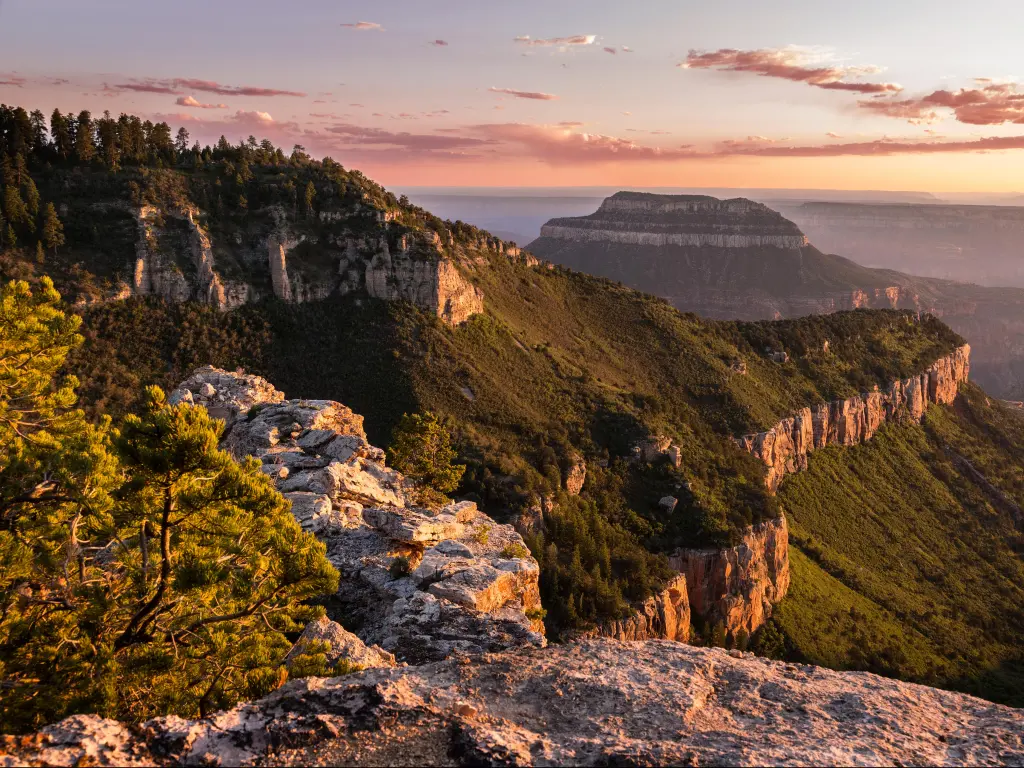
The North Rim
If you follow along Arizona Route 67 South into the park, you can take a scenic drive around the North Rim and catch a glimpse of two unreal viewpoints.
As you follow the route after crossing Kaibab Plateau Hill Point, you'll come across the North Rim Lookout Tower, Widforss Trailhead, North Rim Campground, and Grand Canyon Lodge before terminating at Bright Angel Point.
From the route, you'll witness Point Imperial, the highest point of the North Rim, set at an elevation of 8,803 feet. This picture-perfect view includes not only the highest point but glimpses of the Marble Canyon, different rock layers, as well as the Painted Desert located at the East end.
You'll also cross Cape Royal, a popular viewpoint for unobstructed 360° vistas of the Canyon where you can admire majestic views of the Vermillion Cliffs. As the most southern point of the North Rim, it is one of the top destinations within the park to catch the glorious sun set over the ridges.
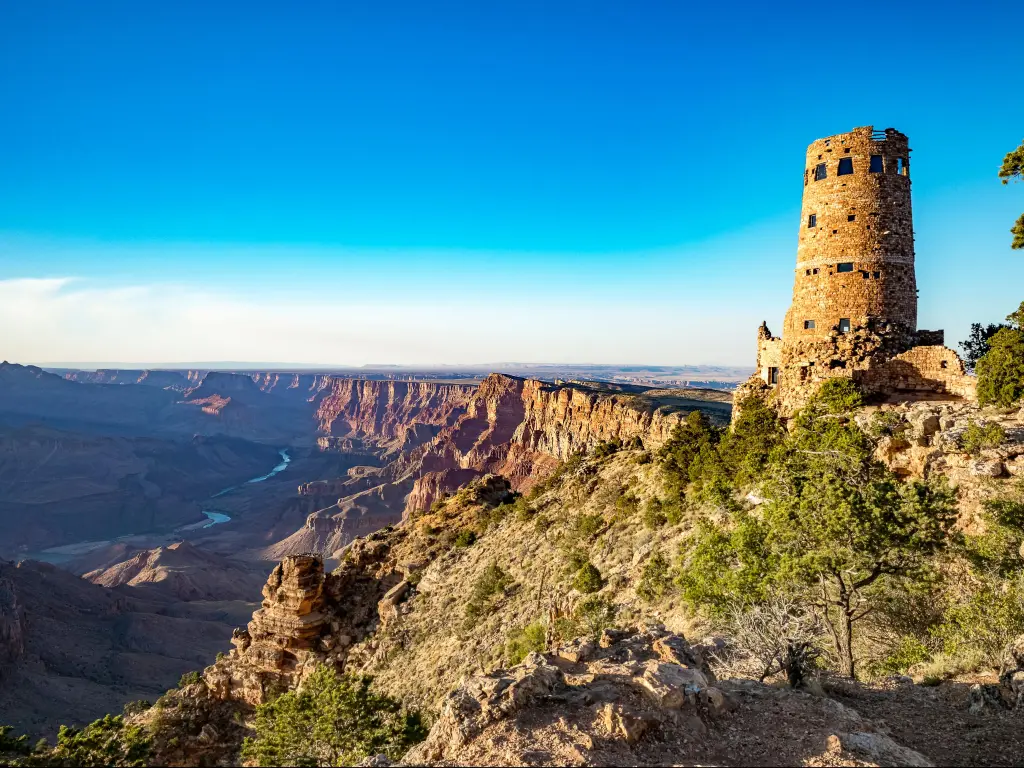
The South Rim
The South Rim promises a scenic drive around the Canyon with views like no other. Known famously as Desert View Drive, it'll take you from the midst of the South Rim to the east end of the park. Following the same route that leads you to the park, Arizona Route 64 or Highway 64, you'll come across numerous viewpoints, an ancient Puebloan site, and several trailheads!
You'll begin your journey near Grand Canyon Village and drive along the route, coming across vistas like Pip Creek Vista and Duck on a Rock (A unique rock formation deciphered by observers as a duck on a rock).
You'll drive a little further and come across Grandview Point (set at an elevation of 7400 feet), which is one of the best viewpoints in the entire region, offering a view of the Grand Canyon entirely from East to West, along with some glimpses of the bends of the river.
As you drive along further on this route, you'll come across Moran Point and the Tusayan Pueblo Site (an archaeological site highlighting the ways of life and rituals of the Puebloan people).
Ultimately, you'll come across Lipan Point, which will give you clear views of Hance Rapid, one of the whitewater rapids in the river, as well as the Unkar Delta, a site of historical importance, and Navajo Point, which is the highest overlook on the South Rim.
This rather scenic route will end at Desert View Point, an essential point in the eastern region of the Grand Canyon.
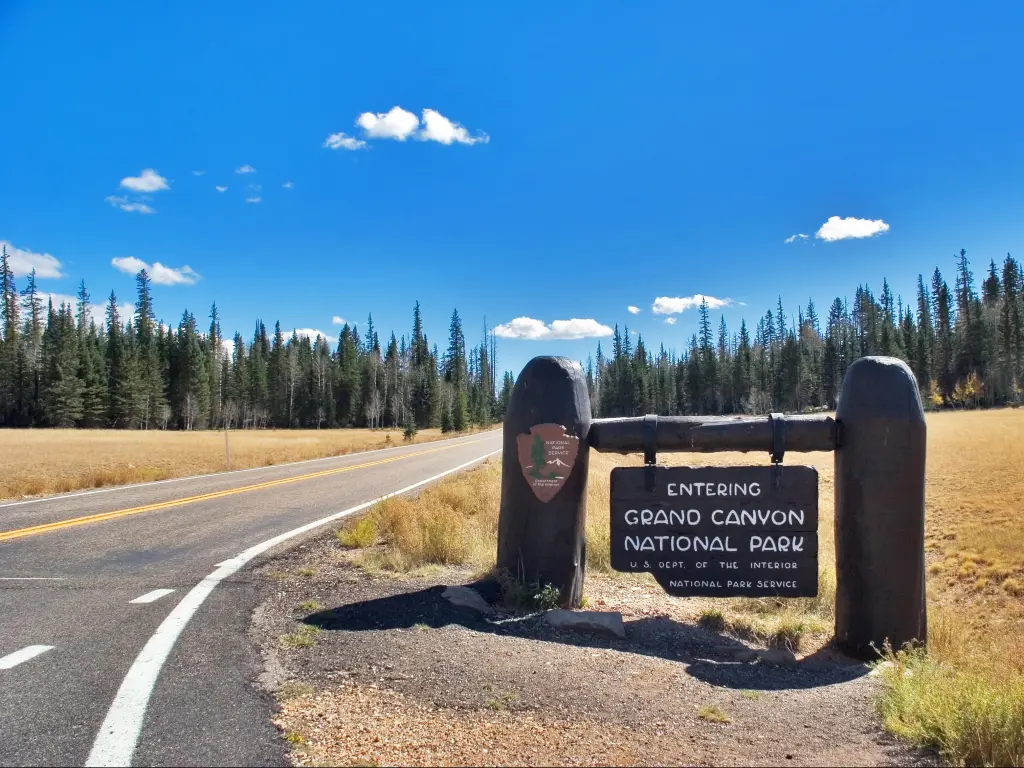
How close can you park to the Grand Canyon?
There are several spaces to park near the Grand Canyon once you're inside the national park. At the South Rim, you'll find parking spots near Mather Point, at the South Rim Visitor Center, and near the Bright Angel Bicycle Rent Store & Cafe.
In the North Rim, there are relatively limited parking spots located at either the Grand Canyon Lodge or the North Rim Campground.
The cost of parking is included if you buy the single vehicle park pass for $35, which is valid for seven days.
How close can you stay to the Grand Canyon?
There are several accommodation options in the gateway towns of the Grand Canyon; if you're driving to the North Rim, you can spend your time in Flagstaff, while if you're traveling to the South Rim, you can choose to stay in small towns like Tusayan, Kingman, Williams and Page.
However, the best place to stay while exploring the region is within the national park itself. With several lodges and campgrounds, you'll have a wide variety of options to choose from.
The park has seven lodges in total, six located on the South Rim and one on the North Rim and depending on which part of the park you're looking to explore, you can pick amongst them.
The most famous of them all is the El Tovar Lodge, a registered national Historic Landmark built in 1905. This lodge was visited by President Theodore Roosevelt when the region was being incorporated into the National Park Service, and its one-of-a-kind architecture and design set the bar high for other lodges in national parks across the US.
If you're an adventure junkie, you can camp in one of the four campgrounds (two on the South Rim, one on the North Rim, and one on the East end of the region), out of which Mather Campground is the most popular.
Irrespective of the accommodation you end up going with, be sure to make your reservations well in advance as spots at the lodges and campgrounds (the ones that take reservations) are very well sought-after!
If you are looking to base yourself in a place with facilities, restaurants and points of interest, Flagstaff is one of the closest cities to the Grand Canyon. This charming city offers great accommodation options and Little America Hotel Flagstaff is one of the best in the area.
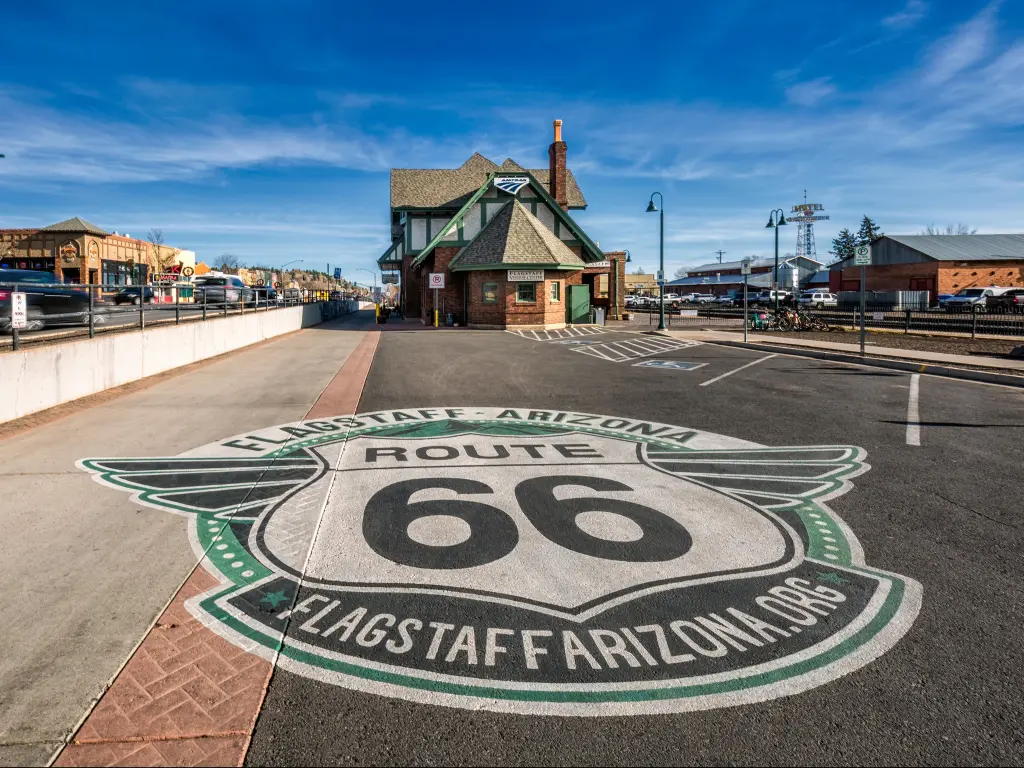
When can you visit the Grand Canyon?
The Grand Canyon's operating hours are seasonal and vary according to the region you're visiting. These hours are subject to frequent change due to local conditions. It's best to check with the U.S. National Park Service for up-to-date guidance here just before you travel.
South Rim
It is accessible 24 hours daily year-round, though some attractions may be closed depending on the weather in the winter months. The normal daily operating hours for the South Rim Visitor Center are from 9 am to 4 pm, all year round.
North Rim
It is open to visitors annually from 15 May to 15 October and is closed for the rest of the year. During its operational season, the entrance to the North Rim is open 24 hours. The North Rim Visitor Center is open from 8 am to 5 pm during the months that the facilities of the North Rim are functional.
The entrance and parking fees for the Grand Canyon
The entrance fee into the Grand Canyon National Park depends on the vehicle you're in and is the same for both the North and South Rims. Keep in mind that only credit cards are accepted and that you can also book your entrance pass online.
7-day individual park pass (one individual entering via foot, bicycle, shuttle, railway, etc.) - $20
7-day motorcycle park pass - $30
7-day single-vehicle park pass - $35
Annual Park Pass - $70 (a pass valid for 365 days from the date of purchase and admits one private, non-commercial vehicle or its pass holder)
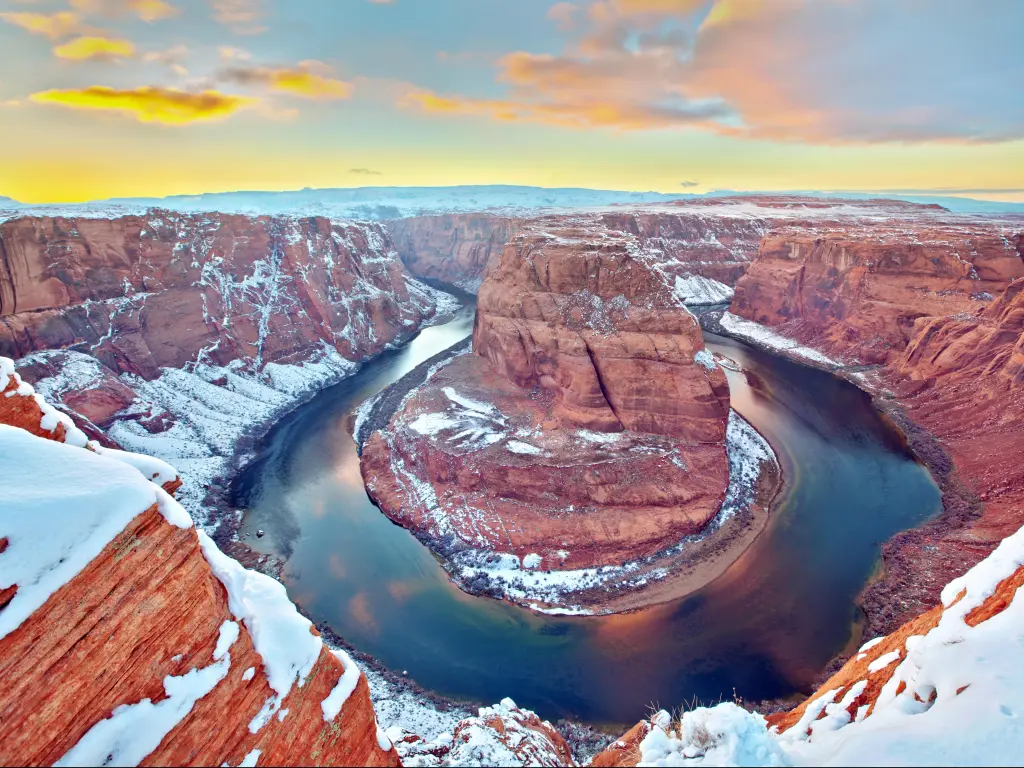
Best time to drive to the Grand Canyon
The best time to visit the Grand Canyon varies depending on what you want to get out of the experience. A famous destination year-round, though the summer months at both the North Rim and South Rim are bound to be the most crowded.
Specifically, visiting the South Rim in the springtime or early summer months is recommended as the weather becomes more pleasant after a long winter, and the crowds are relatively sparse.
It's also an excellent time for adventure-seekers and hikers to visit because the temperatures are perfect for hiking at high altitudes and promise picturesque sunsets.
If you happen to be planning a budget-friendly trip and can brave the cold, visiting the South Rim in the winter season is a great way to witness the beauty of the region while cutting costs.
If you're looking to visit the North Rim, visiting in the months of May or September and October is considered to be ideal as you'll be able to enjoy the unique sights and vistas of the North Rim while it remains open for the season without the roaring crowds that the summer months bring.
Due to the drastic difference in elevation (ranging from 2000 feet up to 8000 feet) across the Grand Canyon, the area itself influences the weather.
Generally, the summer temperatures on the South Rim remain between 80-100 degrees Fahrenheit while the temperatures in the North Rim are lower (approximately 70 degrees), especially at nighttime.
The autumn months are more pleasant, with temperatures ranging between 50-60 degrees Fahrenheit on the rims and significantly lower if you happen to be adventuring near the Colorado River, which cuts through the Canyon.
Wintertime brings freezing weather and icy roads leading to the South Rim, while the North Rim is closed for the season. Along the higher elevations, the temperatures remain in the 40s while they drop much lower near the river.
You can also expect snowfall on the rim and possibly at lower elevations as well. Lastly, the springtime brings warmer weather with temperatures ranging between 50-60 degrees Fahrenheit in early spring and rising gradually.
Some events that happen annually at the Grand Canyon that are with checking out are the Grand Canyon Music Festival (near the South Rim), the Grand Canyon Star Party (hosted at the Yavapai Observation Station), and Native American Heritage Days (honoring the contribution of the ancestral tribes at several spots around the Colorado Plateau and Canyon).
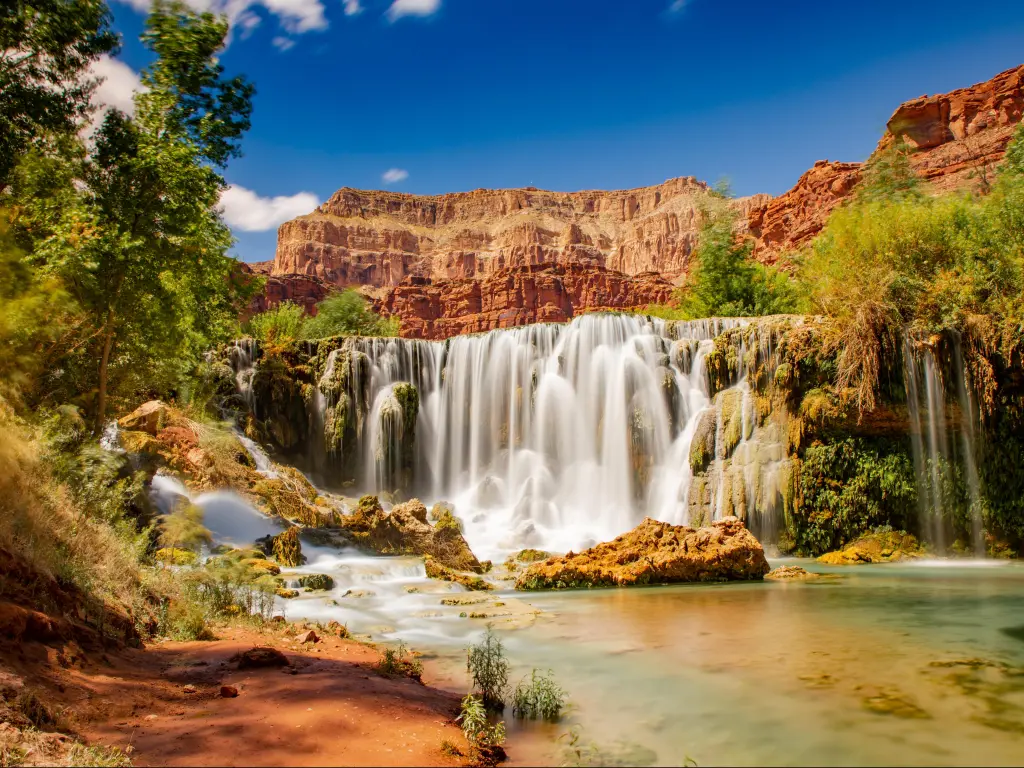
Travel tips for visiting the Grand Canyon
With the ethereal beauty of the Grand Canyon comes a plethora of safety regulations to ensure that both the environment and you are protected. Some tips for exploring the area safely are to stay on designated trails, always keep an eye on the edge and be extra careful near the rim, and don't toss anything from the rim to the surface of the Canyon.
In the summer, with the soaring temperatures, it is imperative that you remain well-hydrated and remain prepared for any summer thunderstorms. Regardless of when you end up visiting, keep something warm to wear on hand as the weather can change sporadically.
It is a good idea to check the daily updates before you set off to visit the Grand Canyon to see which parts of the canyon are accessible and which visitor centers are operating. Keep in mind that the operating hours are subject to change as well.
Getting to the Grand Canyon National Park
| Starting City | Distance | Driving Time | Entrance |
|---|---|---|---|
| Flagstaff, Arizona | 210 miles | 3 hours 45 minutes | North Rim |
| Phoenix, Arizona | 240 miles | 3 hours 45 minutes | South Rim |
| Las Vegas, Nevada | 260 miles | 4 hours 30 minutes | North Rim |
| Albuquerque, New Mexico | 400 miles | 6 hours | South Rim |
| Denver, Colorado | 670 miles | 10 hours 30 minutes | South Rim |
With the region taking up over a million acres, the routes to get there are scenic and guarantee beautiful sceneries that are an amalgamation of tall mountains, jagged canyons, and unique rock formations.
If you're starting your trip from Phoenix to get to the Grand Canyon (South Rim), you'll start your journey on Interstate 17 North, which will lead you to Flagstaff, one of the closest towns to the Grand Canyon.
After this, you'll take Interstate 40 West to Williams, another gateway town, and ultimately merge with Highway 64, a road surrounded by towering canyons, leading you to your destination.
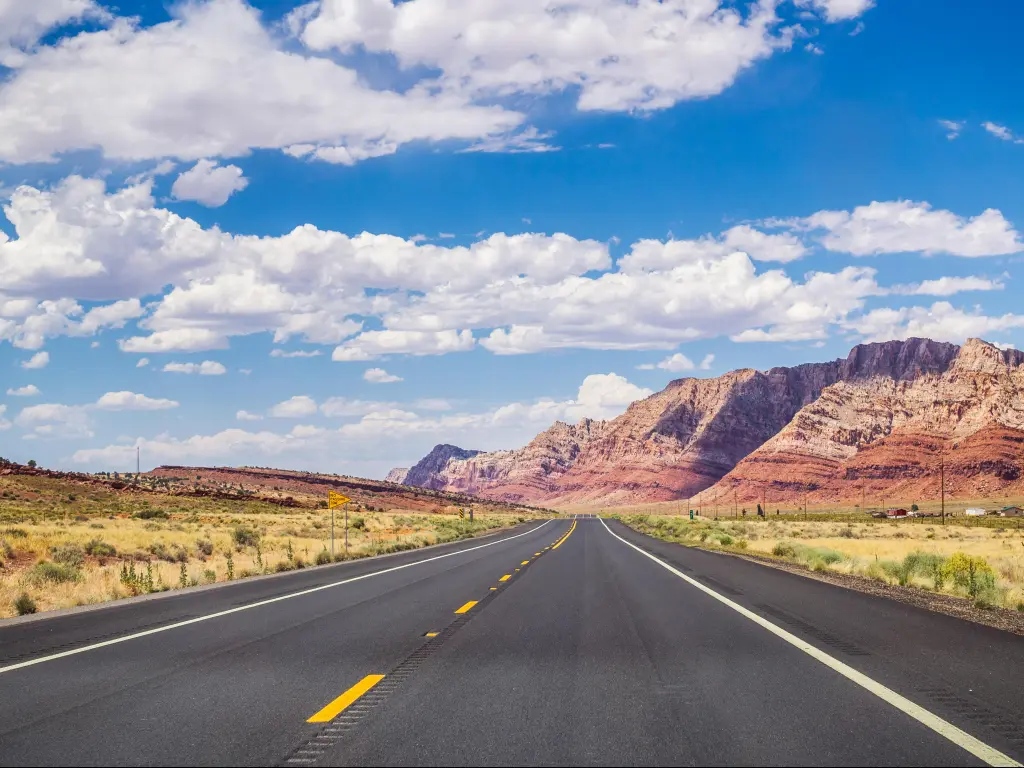
Instead, if you happen to be making a trip from Denver through Colorado and Utah to get to Arizona, you'll follow Interstate 25 South towards Albuquerque, which will allow you to get on Interstate 40 towards Williams and ultimately Highway 64, the scenic drive of South Rim.
If you're traveling from Las Vegas, getting to the North Rim is the shorter way to the Canyon. You'll follow along Interstate 15 North and US Route 89 South to get to Arizona Route 67 South, the road leading to the North Rim.
Also known as the Kaibab Plateau - North Rim Parkway, Arizona Route 67 South leads you through the national park and the Kaibab National Forest, promising scenic vistas along the way.

